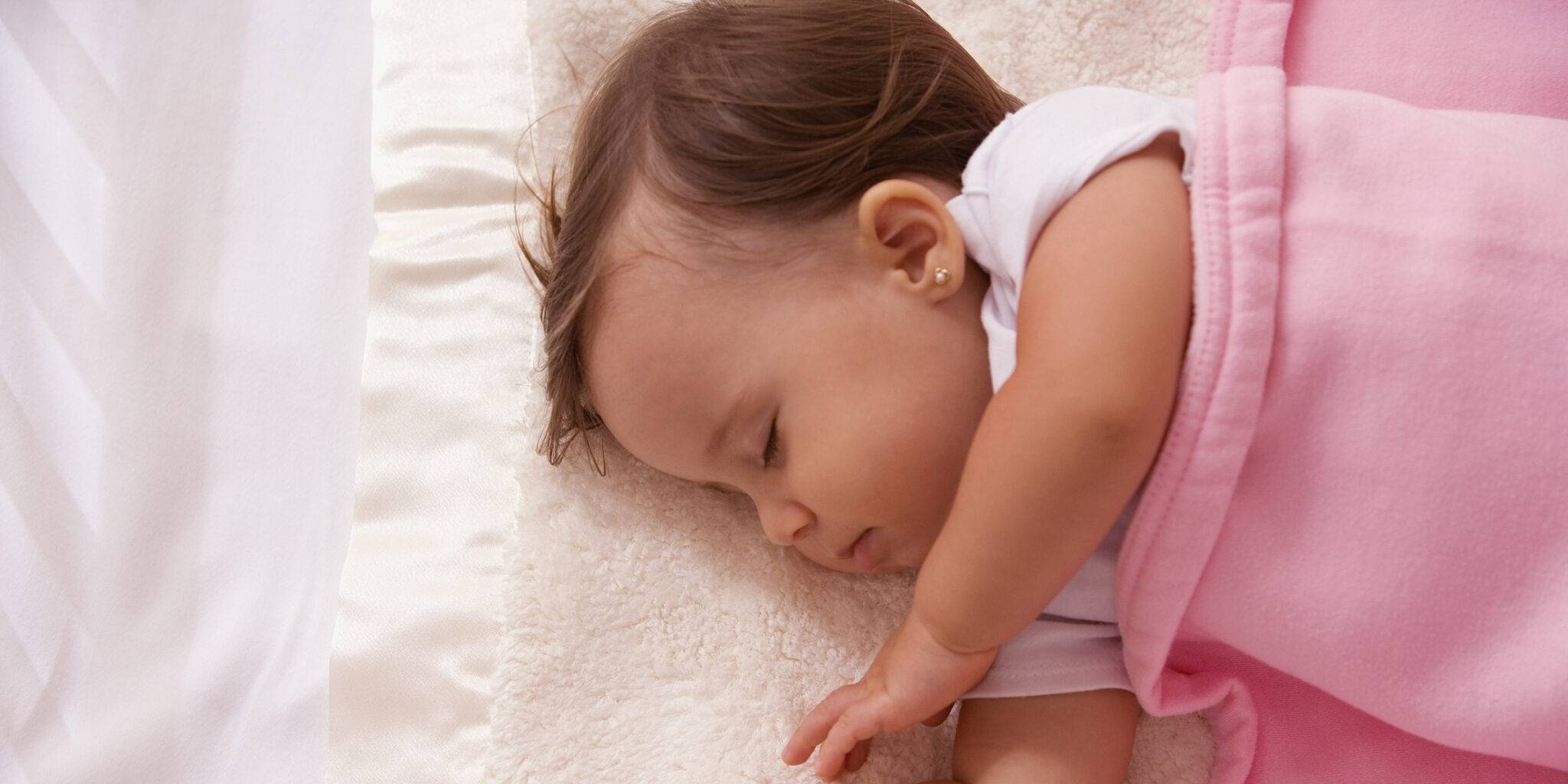- Loading the Elevenlabs Text to Speech AudioNative Player...Facebook
-
Messenger
-
Twitter
-
Pinterest
-
Linkedin
-
Email
Table of Contents
Many young people want to have their ears pierced. For new moms, you may be excited to have your little one’s ears pierced already.
Ear piercings in children can be done for cultural or cosmetic reasons, but they’re not medically necessary. But this doesn’t mean that anyone can perform the ear piercing! If you have decided on an ear piercing for your little one, go to your child’s pediatrician.

Why Choose a Pediatrician to Pierce My Child’s Ears?
Pediatricians include pediatric ear piercings as one of their service offerings. However, not all offer such services at their clinics. Also, not all insurance covers ear piercings. But the cost is usually minimal and includes the earrings and the procedure itself.
Let’s dive into the reasons why a pediatrician is best suited to do ear piercings for your child.
1. Medically-Trained Professionals
Pediatricians are experts in child healthcare; hence, they’re armed with training in performing ear piercings. They can also provide detailed instructions on aftercare. You can have follow-up visits at their clinic if there are any issues, such as infection, that may arise.
2. Safe Environment for Children and Parents
Pediatricians fully understand the importance of safety and associated risks in ear piercings. They are trained to perform the procedure under the highest standards of hygiene and sanitation. Hence, you’re assured that your baby’s ear piercings are safe.
3. Medical-Grade Equipment and Supplies
The equipment used for the procedure is of utmost importance. Instead of a standard piercing gun you would find at the mall or retail stores, your child’s pediatrician uses medical-grade piercers.
In addition, to reduce the risk of an allergic reaction, your provider knows what kind of baby earrings are medical-grade. Most pediatricians let kids wear titanium, surgical steel, or precious metal earrings that are completely free from nickel.
4. Familiarity with Your Child
With your child’s pediatrician, the doctor will be familiar with your child’s medical background. They have a record of the vaccination history to ensure your child has received all recommended immunizations before piercing.
How are Pediatric Ear Piercings Done?
Below are the detailed steps for the medical ear piercing procedure by a pediatrician.
- The doctor will choose or let you choose what specific area the piercing will be in.
- The doctor marks the spot with a surgical marking pen.
- The doctor creates a hole at the marked spot using a needle or piercing gun.
- The doctor inserts the medical-grade earrings.
Expect that your child will feel pain during the ear-piercing procedure. The pain is minimal and temporary.
Pediatric Piercings vs. Jewelry Store Piercings: The Differences
Aside from a pediatric clinic, you have other options for getting your kid’s ears pierced, including going to a jewelry store. However, the former still presents more advantages than the latter. Let’s check out their differences:

Medical Expertise
Board-certified pediatricians perform pediatric ear piercings. They have training and expertise in infection prevention and wound care. They possess the necessary knowledge and experience to carry out the procedure safely.
While jewelry stores appear convenient, the staff don’t have the medical training and expertise to properly perform a child’s ear piercing. This may result in a variety of problems, including infections, allergic reactions, and more.
Sterile Environment
Pediatric ear piercings are performed in a medical clinic, hence the sterile environment. They follow strict hygiene standards, ensuring all medical devices are properly sanitized, including marker pens and needles.
Most jewelry stores use piercing guns for the procedure. While this doesn’t sound like a big deal, piercing guns can’t be sterilized properly, making your child more susceptible to infections.
Aftercare and Follow-up
In pediatric ear piercing, the doctor will provide detailed instructions on caring for the wound and other steps to ensure safe healing and recovery after the procedure. Should any allergies or infections arise, you could make follow-up visits to the clinic.
For the jewelry store piercing, the staff may fail to provide adequate aftercare instructions or follow-up care, leaving you to deal with any complications on your own once you walk out of the store. There is no degree of accountability for the procedure performed.
Why is Aftercare for Your Child’s Ear Piercings Important?
After your child’s ears have been pierced, you must strictly adhere to the care instructions provided. Why?
Not practicing proper aftercare for your baby’s newly pierced ears may increase the chances of an ear-piercing-related infection. Some jewelry stores don’t provide a detailed aftercare plan.
Here are some aftercare tips that you may want to take note of, according to the American Academy of Pediatrics (AAP), especially if you aren’t given aftercare instructions for baby ear piercings:
- Wash your hands before cleaning your child’s ears.
- Don’t touch the pierced ears if you don’t intend to clean them.
- Do cleaning 2-3 times daily. Clean the front and back of the piercing with soap and water. Clean the area beneath the earring.
- During cleaning, ensure the earring’s back is secure but not very tight.
- Gently rotate the earring post frequently.
- To avoid tearing, avoid pulling the earrings while washing or brushing your child’s hair.
- Don’t remove the earrings for at least six weeks since this is the healing period of ear piercing. If the earrings are removed before this point, the ear hole may close.
- For the first few months after piercing, wear only hypoallergenic posts or stud earrings to avoid tearing.
- Refrain your child from immersing in water such as tubs, pools, and other bodies of water during the healing period. Exposure to and immersion in water may increase the risk of ear infections.
- Keep an eye out for infection symptoms such as irritation, redness, discomfort, sensitivity, and discharge after the procedure. If these symptoms appear, take your child to the doctor.
What are the Risks Associated with Ear Piercing for Kids?
The most important reason why you have to let a pediatrician pierce your child’s ears is to lessen the health complications your child may develop after an ear piercing.
Think of the possibilities that may arise when, for example, you have your child’s ears pierced at a mall kiosk. Will they be able to provide the aftercare, just in case your child develops some health issues related to ear piercings?
There are several health risks associated with ear piercing for children, the most common of which is infection. Allergies can also occur after a piercing. Other than that, piercings can also tear in rare instances.
Infection
There is a risk of infection with all ear piercings. However, the risk is higher among young children. If a child is not old and/or responsible enough to care for baby ear piercings, you must keep them clean and healthy.
In addition, if an infection develops and causes a fever, babies under the age of three months may need to be admitted to the medical facility, depending on the protocol.
Thus, many pediatricians choose not to pierce a baby’s ears until he or she is 4 months old. Before piercing their ears, your baby should also have obtained his or her first round of vaccinations to lessen the chances of an infection.
Tearing
If an earring is pulled or snags on something, individuals of all ages are at risk of ear tearing near the piercing site. This especially holds for long, dangling earrings. Until they are older, your kids should only wear stud earrings—the style that doesn’t dangle.
Aside from stud earrings, an alternative is to let your child wear a “huggie” earring that is more like a loop yet remains close to the earlobe. The chances of tearing off the earlobe are lessened since your kid’s fingers can hardly fit on the inner side of the loop.
Allergies
Allergic reactions to the elements used in earrings may occur in children. It’s because certain metals contain nickel, which is a common allergen for many people. It is advised to wear only earrings made of a precious metal such as gold or another nickel-free metal such as titanium, sterling silver, or surgical steel.

Other Risks
There are also other risks associated with baby ear piercings when they aren’t taken care of and/or performed correctly. These include a purulent discharge, embedded backings, auricle deformation, bleeding, and keloid formation in children above 11 years old.
A purulent discharge is a thick, yellow-white fluid that comes out of an infected ear piercing. This occurs in up to 24% of all ear piercings cases.
Embedded backings occur at the ear lobe and helix. This happens due to improper aseptic technique, insufficient training of the piercer, and the piercing of the ears of young children. The infection symptoms are ear pain and redness at the pierced site.
Get Your Child’s Ears Pierced by a Pediatrician
If you plan on getting your child’s ears pierced, we recommend that you visit a pediatrician who does ear piercings for kids. We only want the best for your child, and we believe that a pediatrician will be able to help you fight off those ear infections that may occur!
If you’re looking for a pediatrician who does ear piercing in Georgia, check out Omega Pediatrics. They offer professional ear piercing services for children to ensure your child’s safety during this medical procedure.
FAQ
Why should I choose a pediatrician for my child’s ear piercings?
Pediatricians are medically-trained professionals who prioritize safety and hygiene, ensuring a safe environment and using medical-grade equipment. They’re also familiar with your child’s medical history and can provide thorough aftercare instructions.
How are pediatric ear piercings done?
Pediatricians typically mark the spot, create a hole using a needle or medical-grade piercer, and insert medical-grade earrings. While there may be some discomfort during the procedure, it’s minimal and temporary.
What are the differences between pediatric ear piercings and jewelry store piercings?
Pediatricians offer expertise, perform procedures in a sterile environment, and provide detailed aftercare instructions and follow-up care. In contrast, jewelry stores may lack medical expertise, use non-sterile equipment, and may not offer comprehensive aftercare support.
Why is aftercare important for my child’s ear piercings?
Proper aftercare reduces the risk of infections and complications. Following guidelines such as washing hands before cleaning the ears, avoiding touching the pierced area unnecessarily, and cleaning the area regularly can promote safe healing.
What are the risks associated with ear piercings for kids?
Risks include infections, allergic reactions to metals like nickel, and tearing of the earlobe. Pediatricians advise against piercing babies’ ears until they’re at least four months old and have received their first round of vaccinations to minimize infection risks.
Can non-patients schedule ear piercing appointments?
Ear Piercing Services for Non-Patients
If you’re considering ear piercing for your child and are wondering whether non-patients can schedule an appointment at our clinic, the answer is yes! We cater to all children, regardless of whether they are current patients at our facility. Your child’s comfort and safety are our top priorities, and we’re here to provide a professional and welcoming experience for everyone.



